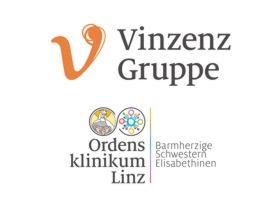de Salazar, Adolfo, Dietz, Julia, di Maio, Velia Chiara, Vermehren, Johannes, Paolucci, Stefania, Müllhaupt, Beat, Coppola, Nicola, Cabezas, Joaquín, Stauber, Rudolf E, Puoti, Massimo, Arenas Ruiz Tapiador, Juan Ignacio, Graf, Christiana, Aragri, Marianna, Jimenez, Miguel, Callegaro, Annapaola, Pascasio Acevedo, Juan Manuel, Macias Rodriguez, Manuel Alberto, Rosales Zabal, Jose Miguel, Micheli, Valeria, Garcia Del Toro, Miguel, Téllez, Francisco, García, Federico, Sarrazin, Christoph und Ceccherini-Silberstein, Francesca
(2020)
Prevalence of resistance-associated substitutions and retreatment of patients failing a glecaprevir/pibrentasvir regimen.
The Journal of antimicrobial chemotherapy, 75 (11).
pp. 3349-3358.
ISSN 1460-2091
Für diesen Eintrag wurde kein Volltext-Dokument angefügt.
Kurzfassung
OBJECTIVES
To investigate resistance-associated substitutions (RASs) as well as retreatment efficacies in a large cohort of European patients with failure of glecaprevir/pibrentasvir.
METHODS
Patients were identified from three European Resistance Reference centres in Spain, Italy and Germany. Sequencing of NS3, NS5A and NS5B was conducted and substitutions associated with resistance to direct antiviral agents were analysed. Clinical and virological parameters were documented retrospectively and retreatment efficacies were evaluated.
RESULTS
We evaluated 90 glecaprevir/pibrentasvir failures [3a (n = 36), 1a (n = 23), 2a/2c (n = 20), 1b (n = 10) and 4d (n = 1)]. Ten patients were cirrhotic, two had previous exposure to PEG-interferon and seven were coinfected with HIV; 80 had been treated for 8 weeks. Overall, 31 patients (34.4%) failed glecaprevir/pibrentasvir without any NS3 or NS5A RASs, 62.4% (53/85) showed RASs in NS5A, 15.6% (13/83) in NS3 and 10% (9/90) in both NS5A and NS3. Infection with HCV genotypes 1a and 3a was associated with a higher prevalence of NS5A RASs. Patients harbouring two (n = 34) or more (n = 8) RASs in NS5A were frequent. Retreatment was initiated in 56 patients, almost all (n = 52) with sofosbuvir/velpatasvir/voxilaprevir. The overall sustained virological response rate was 97.8% in patients with end-of-follow-up data available.
CONCLUSIONS
One-third of patients failed glecaprevir/pibrentasvir without resistance. RASs in NS5A were more prevalent than in NS3 and were frequently observed as dual and triple combination patterns, with a high impact on NS5A inhibitor activity, particularly in genotypes 1a and 3a. Retreatment of glecaprevir/pibrentasvir failures with sofosbuvir/velpatasvir/voxilaprevir achieved viral suppression across all genotypes.
Actions (login required)

- Eintrag anzeigen


 Tools
Tools Tools
Tools